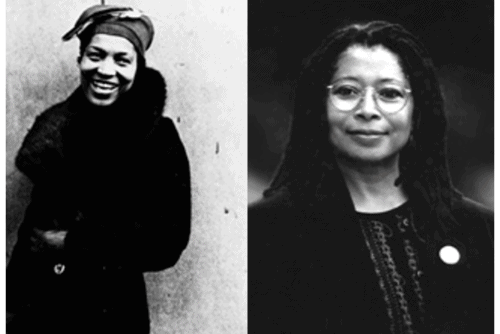The political rubric and analytical category of “immigrant detention” has become both a critically necessary and theoretically troubling discursive terrain. On the one hand, the racist criminalization and domestic pursuit of Black and Brown migrant—or assumptive migrant and/or “undocumented”—bodies is a classical technology of the U.S. white supremacist state. A situated historical examination of how this racist statecraft articulates particularly and peculiarly to our political moment is clearly crucial to understanding, effectively resisting, and radically opposing/abolishing the specific edifices of U.S. state violence in their most common institutional terms: Homeland Security, border policing, wars on (immigrant) gangs, and “illegal immigrant” control. On the other hand, the rubric of immigrant detention seems to run the risk of becoming a fetishized political category that is organically linked to the vexed rhetorics of an alleged “post-9/11” era. This discursive structure suggests, and sometimes explicitly asserts, the emergence of multiple “new” forms of racist state violence in the context of a U.S. “War on Terror,” and often relies on an exceptionalist, ahistorical narration of anti-immigrant civil and state violence in order to distinguish immigrant criminalization/detention from other, more politically normalized forms of institutionalized dehumanization.1
Here, I attempt to offer a theoretical framing of the U.S. carceral-punitive state that departs from narrowing and particularizing discussions of (allegedly) exceptional and “new” productions of racist criminalization and policing, by focusing on the political and historical animus of the U.S. prison regime. That is, I am concerned not with an inventory of “what the racist state is doing” in this historical moment, but rather with an analysis of how it is able to do what it does, and thus a focal attention to the historical conditions of possibility for the current institutional formations of migrant criminalization and immigrant detention.
The U.S. prison is a global statecraft, an arrangement and mobilization of violence that is, from its very inception, already unhinged from the delimiting “domestic” (or “national”) sites to which it is presumptively tethered. This essay proceeds by examining the political rubrics of race, gender, and immigration through the analytic of the U.S. prison regime’s globality. This meditation suggests a genealogy and theory of the U.S. prison regime that resonates the institutional and historical continuities between 1) the ongoing technologies of white supremacy organic to the U.S. racial2/racist state3; and 2) the array of global (or extra-domestic) technologies of violence that form the conditions of possibility for social formations and hegemonies integral to the contemporary moment of U.S. global dominance. How, then, does “gender” work within the arrangements of bodily subjection and subjective disarticulation institutionalized by the prison regime? How does the prison work on “gender,” as a lived body of experience located in the space and time of imprisonment and carceral state violence? What, in turn, is particularly new or unique about “immigration” as an institutional extension of the U.S. prison regime’s protocols and territories? Does immigrant criminalization and imprisonment constitute something qualitatively different in the social logic and racial technologies of imprisonment?
The recent renaissance of critical political, scholarly, and activist discourses confronting the unprecedented scale and growth of the U.S. policing and criminal justice apparatuses has enabled a range of progressive and radical praxis that demonstrates possibility for authentic social transformation. Mitigating this vista of political potential, however, is an insistent theoretical delimitation that overwhelmingly frames such critical discourses as problems of the American local, domestic, and/or national—as if the localities and domesticities of the United States are not already and complexly enmeshed in the societal ensembles and state produced violences of “the global.” This is to suggest, at the outset, that the arrangement of juridically coded bodily violence that is coordinated and institutionalized by the U.S. prison regime generates a logic of (anti)social formation that fundamentally exceeds the national geography within which it is nominally situated. These layered, intersectional technologies of imprisonment (across scales of individualizing and mass-based techniques of bodily immobilization) have thus come to form the premises of a global formation that is fundamental to the very intelligibility of “America”—as an ideological and cultural gravity of identity and identification, multiply formed signifier of material and spatial dominion/occupation, and, perhaps most importantly, as a racially gendered mobilization of militarized policing and juridical force.
- See, for example, Tram Nguyen, We Are All Suspects Now: Untold Stories from Immigrant Communities After 9/11. Boston: Beacon Press, 2005. Nguyen’s investigative, critical journalism offers an important intervention on a generalized vacuum of public, first-person accounts of recent anti-immigrant statecraft. Nonetheless, the book ultimately reifies the “post-9/11” moment by failing to substantively situate the narratives—or analysis of them—within a longer historical conceptualization of the white supremacist, criminalizing state. The broader critique offered in the second half of this essay addresses this tendency as a problem of both political practice and scholarly-activist framing. [↩]
- David Theo Goldberg, The Racial State. Malden, MA: Blackwell Publishers, 2002. [↩]
- Michael Omi and Howard Winant, Racial Formation in the United States: from the 1960s to the 1990s. New York: Routledge, 1994. [↩]



